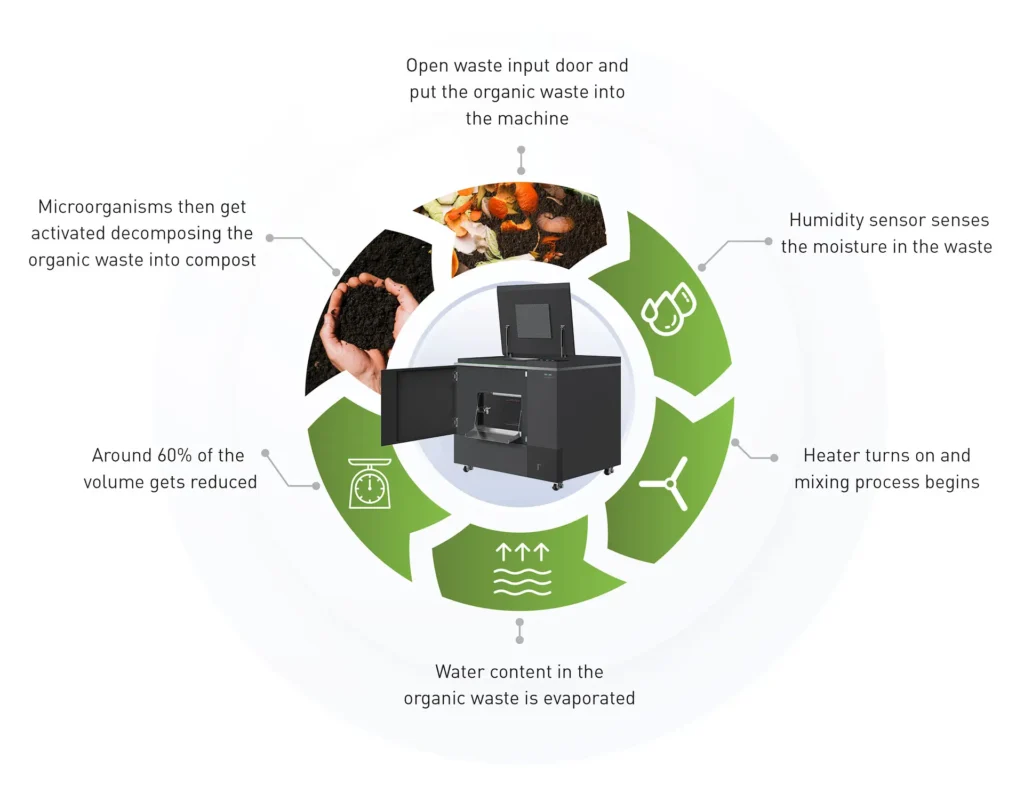How Does a Bio Compost Machine Work? – A Complete Guide
In an era of increasing environmental awareness, bio compost machines have emerged as an efficient solution for managing organic waste sustainably. These machines accelerate the natural composting process, converting food scraps, garden waste, and other biodegradable materials into nutrient-rich compost in just a few hours or days, compared to traditional composting, which can take months.
But how exactly does a bio compost machine work? This article explores the science behind bio compost machines, their key components, the composting process, benefits, and different types available in the market.
1. What is a Bio Compost Machine?
A bio compost machine (also called an organic waste composter or electric composter) is an automated or semi-automated device that breaks down organic matter using microorganisms, heat, and mechanical agitation. Unlike traditional composting, which relies on natural decomposition, these machines speed up the process through controlled conditions.
Key Features
✔ Fast composting (24 hours)
✔ Odor-free operation (sealed environment)
✔ Reduces waste volume by up to 90%
✔ Produces high-quality compost (fertilizer)
✔ Suitable for homes, restaurants, offices, and industries
2. How Does a Bio Compost Machine Work?
The working mechanism of a bio compost machine involves four main stages:
Stage 1: Organic Waste Input
- Users add food waste (vegetable peels, eggshells, coffee grounds), garden waste (leaves, small branches), and other biodegradable materials.
- Some machines have shredders to break down large pieces for faster decomposition.
Stage 2: Microbial Decomposition
- Microorganisms (bacteria, fungi) are introduced—either naturally or via added microbial cultures.
- These microbes digest organic matter, releasing heat and breaking it into simpler compounds.
Stage 3: Controlled Environment (Heat & Aeration)
- The machine maintains an optimal temperature (50–70°C / 122–158°F) to speed up decomposition.
- Automatic mixing/aeration ensures oxygen supply for aerobic bacteria.
- Some models use cocopeat or sawdust as a bulking agent to balance moisture.
Stage 4: Compost Output
- After 24 hours, the waste transforms into dark, crumbly compost.
- The final product is nutrient-rich fertilizer ready for gardens, farms, or potted plants.

3. Types of Bio Compost Machines
- Best for: Homes, offices, small businesses
- How it works: Uses heat, mixing blades, and forced aeration for rapid composting.
- Best for: Restaurants, hotels, municipalities
- How it works: Relies on added bacterial cultures to break down waste without electricity.
- Best for: Large-scale waste processing (farms, food industries)
- How it works: Uses high-capacity shredders, conveyor belts, and temperature control.
4. Benefits of Using a Bio Compost Machine
✅ Reduces landfill waste (up to 90% volume reduction)
✅ Lowers carbon footprint (less methane emissions)
✅ Saves time vs. traditional composting
✅ Produces organic fertilizer (improves soil health)
✅ Odorless & hygienic (ideal for urban areas)
5. Choosing the Right Bio Compost Machine
- When selecting a compost machine, consider:
- Capacity (small 1kg/day for homes vs. 1000kg/day for industries)
- Ease of maintenance
- Composting speed (24-hour vs. 15-day models)
6. Conclusion
Bio compost machines offer a fast, eco-friendly, and efficient way to recycle organic waste into valuable compost. Whether for home use, restaurants, or large-scale industries, these machines help reduce waste, cut disposal costs, and promote sustainable living.
By understanding how bio compost machines work, consumers and businesses can make informed choices to contribute to a zero-waste future.

